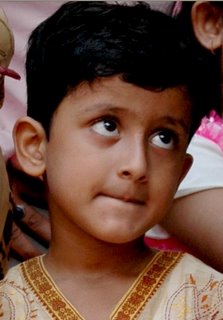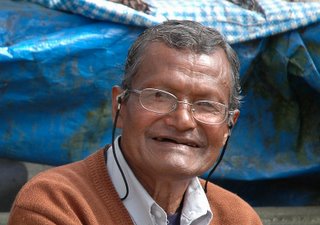Returning from Delhi
Finally, the departure from Delhi is at hand, after nearly two-and-a-half months in India. The blog posts will now be sporadic, till further travels beckon. But before signing off for now, here are some pictures of the Qutab Minar and Red Fort areas of Delhi.







The inscription on the 1600-year-old rustless Iron Pillar of Delhi near the Qutab -- most likely erected to honor Chandragupta Vikramaditya in Udaygiri and later carted to Delhi -- reads:
He, on whose arm fame was inscribed by sword, when in battle in the Vanga countries, he kneaded back with his breast the enemies who, uniting together came against him - he by whom, having crossed in warfare the seven mouths of the river Sindhu, the Vahlikas were conquered, he by the breezes of whose prowess the southern ocean is even still perfumed, he the remnant of the Great Zeal whose energy, which utterly destroy enemies, like the remnant of the great glowing heat of a burned out fire in a great forest, even now leaves not the earth, and gone to the other world, moving in bodily form to the land of paradise won by the merit of his actions, but remaining on this earth by the memory of his fame -- by him, the King, was attained sole supreme sovereignty in the world, acquired by his own arm and enjoyed for a very long time, and who, having a name of Chandra, carried a beauty of countenance like the beauty of the full moon, having in faith fixed his mind upon Vishnu, this lofty standard of the divine Vishu was set up on the hill called Vishnupada.







The inscription on the 1600-year-old rustless Iron Pillar of Delhi near the Qutab -- most likely erected to honor Chandragupta Vikramaditya in Udaygiri and later carted to Delhi -- reads:
He, on whose arm fame was inscribed by sword, when in battle in the Vanga countries, he kneaded back with his breast the enemies who, uniting together came against him - he by whom, having crossed in warfare the seven mouths of the river Sindhu, the Vahlikas were conquered, he by the breezes of whose prowess the southern ocean is even still perfumed, he the remnant of the Great Zeal whose energy, which utterly destroy enemies, like the remnant of the great glowing heat of a burned out fire in a great forest, even now leaves not the earth, and gone to the other world, moving in bodily form to the land of paradise won by the merit of his actions, but remaining on this earth by the memory of his fame -- by him, the King, was attained sole supreme sovereignty in the world, acquired by his own arm and enjoyed for a very long time, and who, having a name of Chandra, carried a beauty of countenance like the beauty of the full moon, having in faith fixed his mind upon Vishnu, this lofty standard of the divine Vishu was set up on the hill called Vishnupada.













































